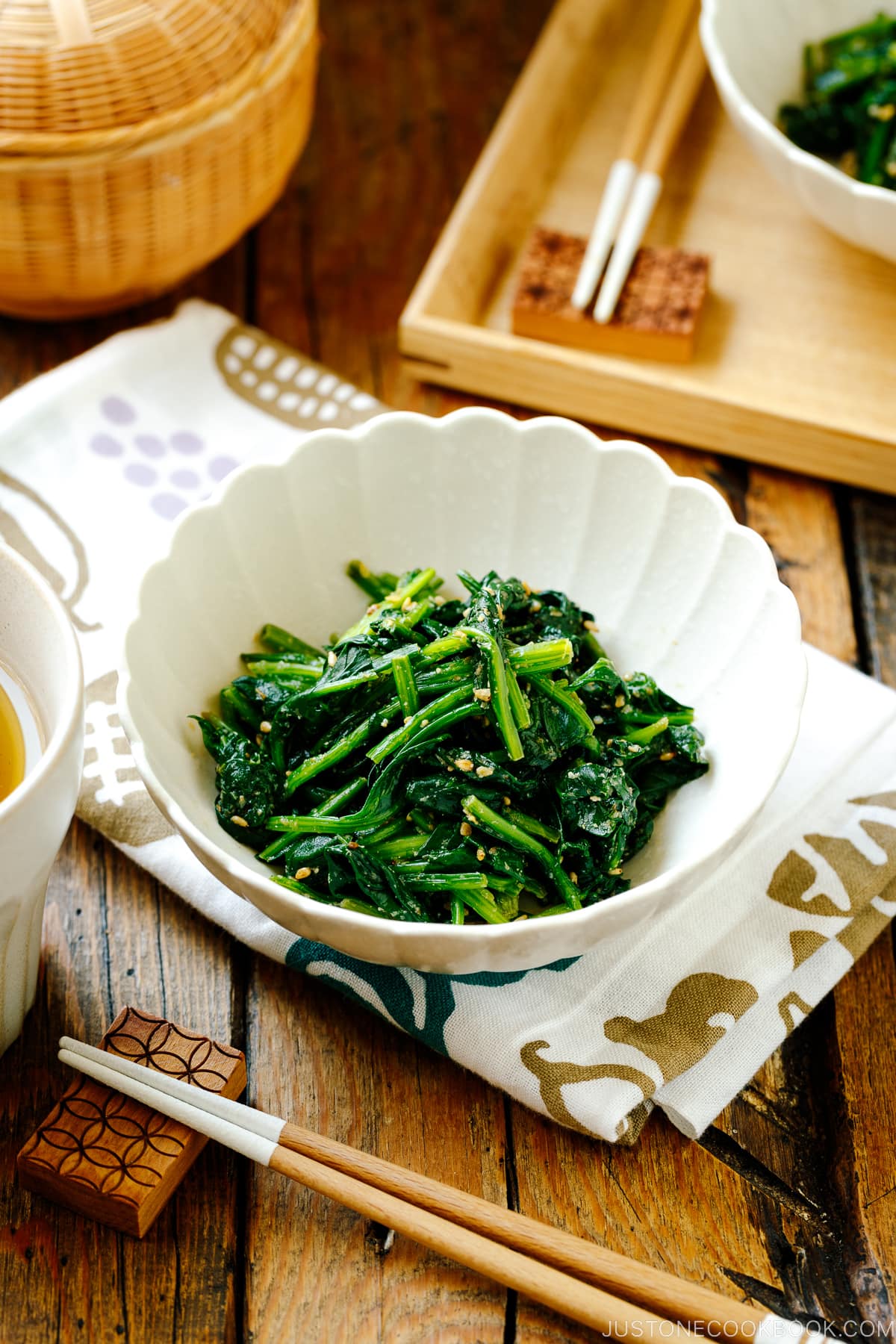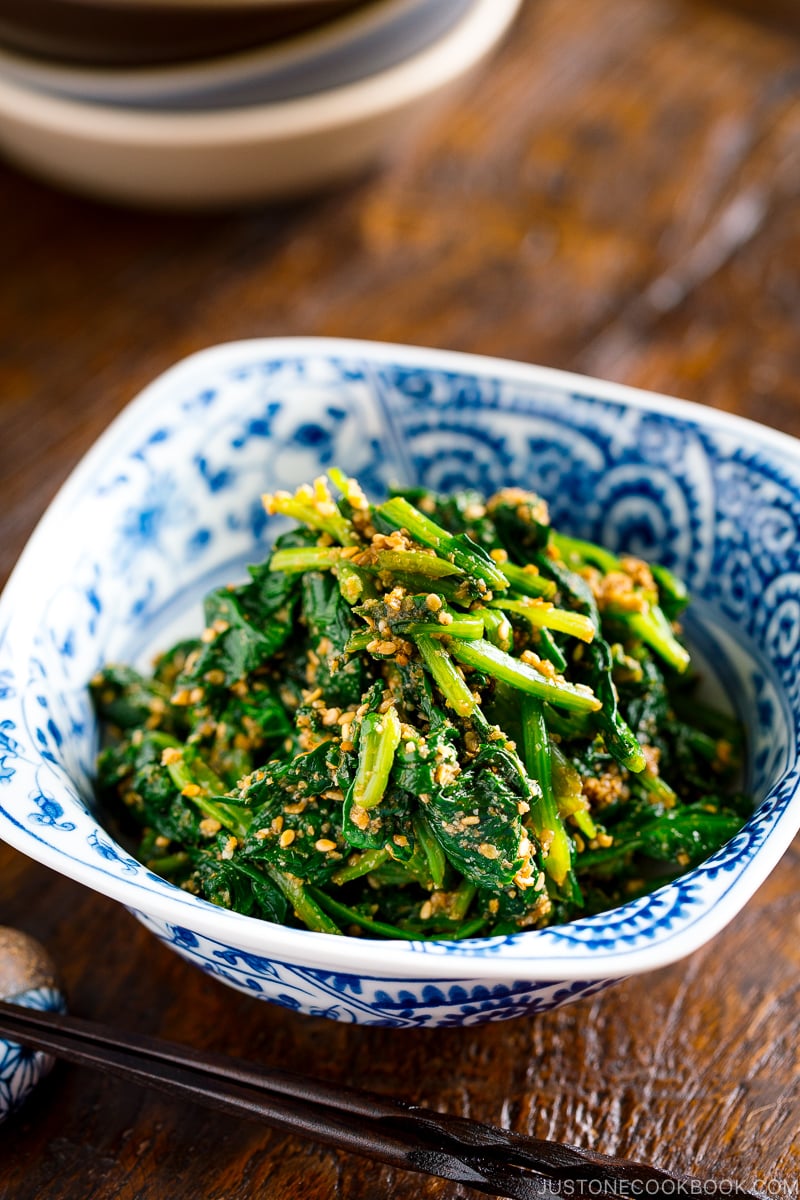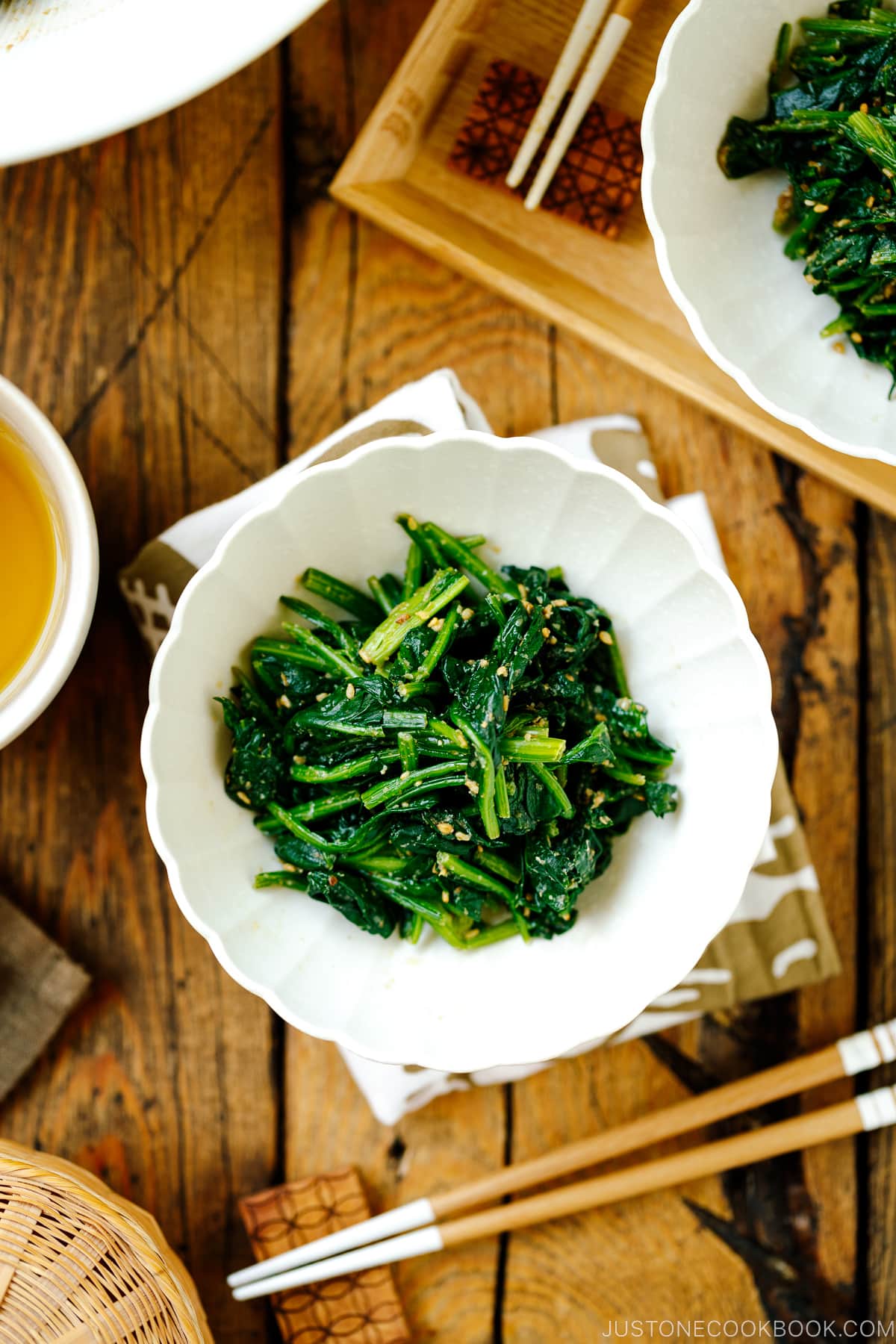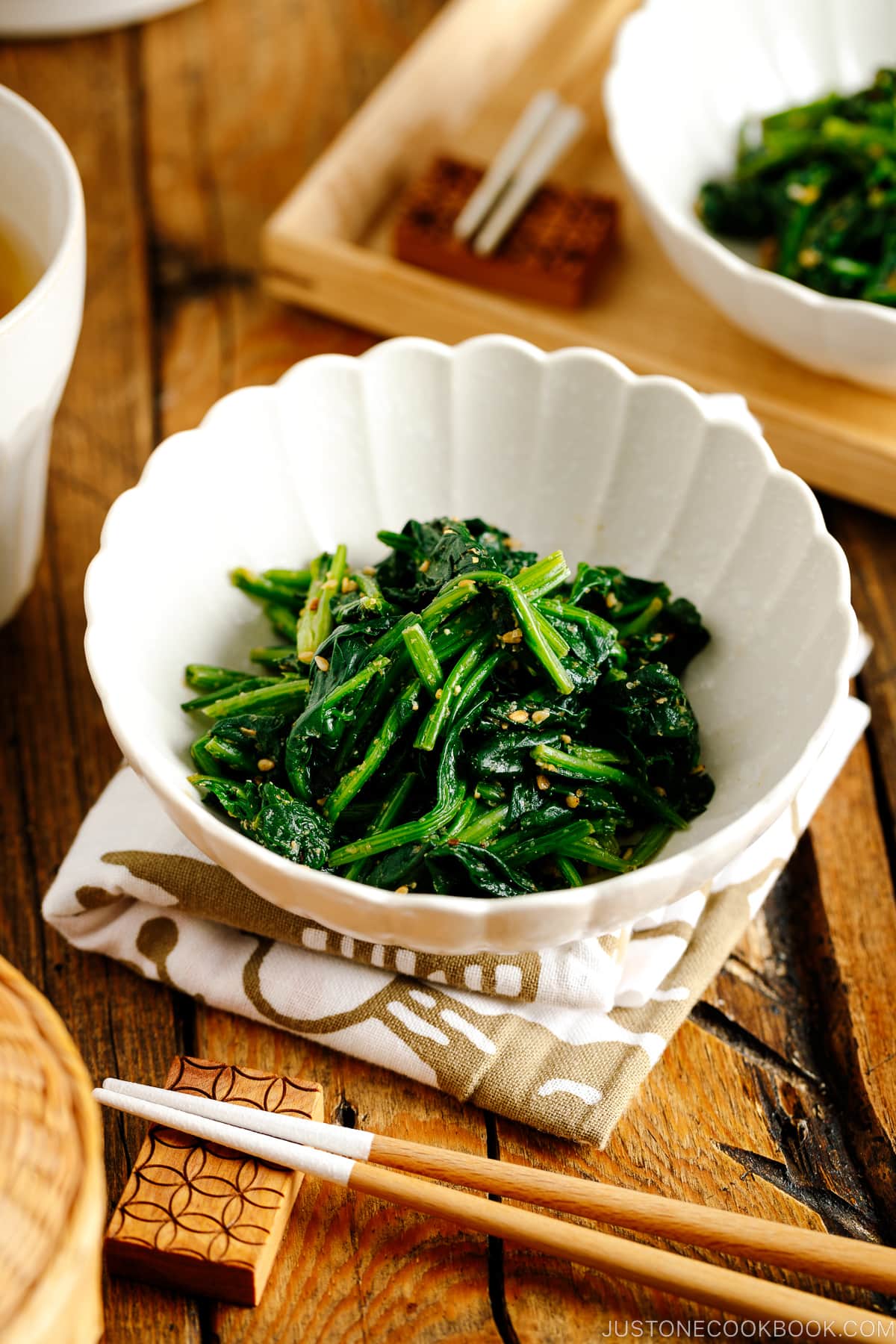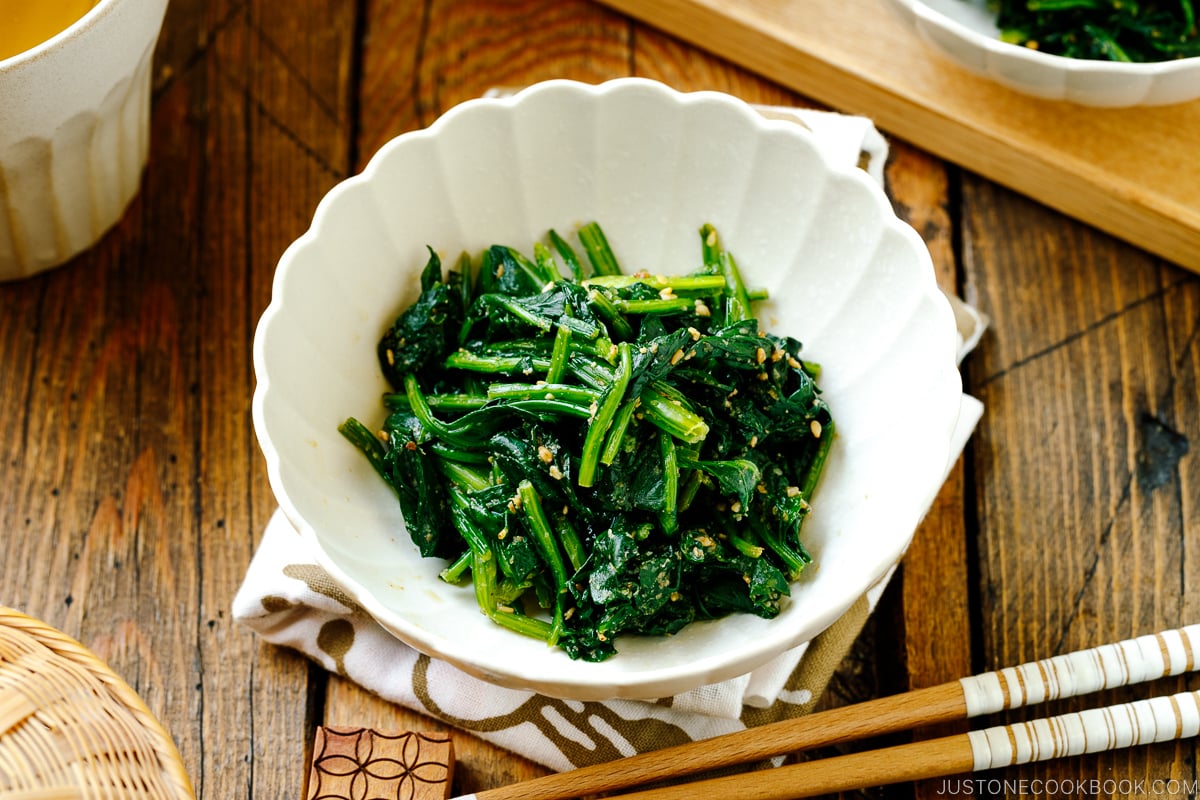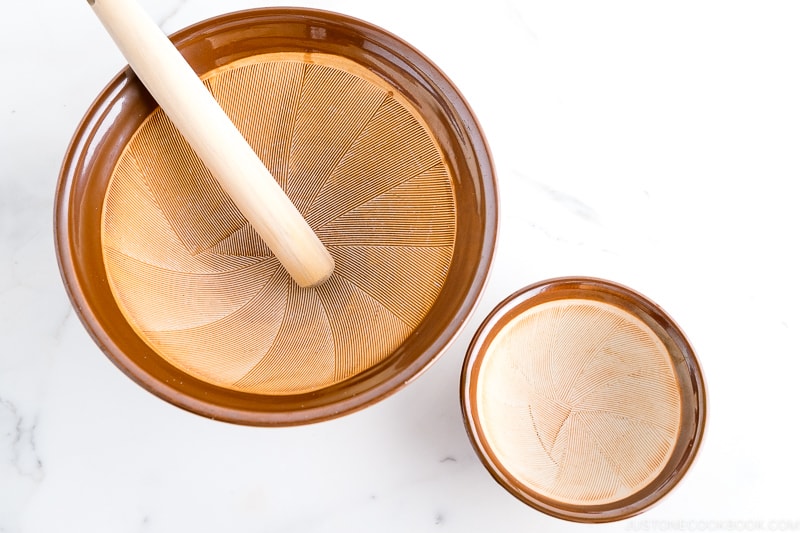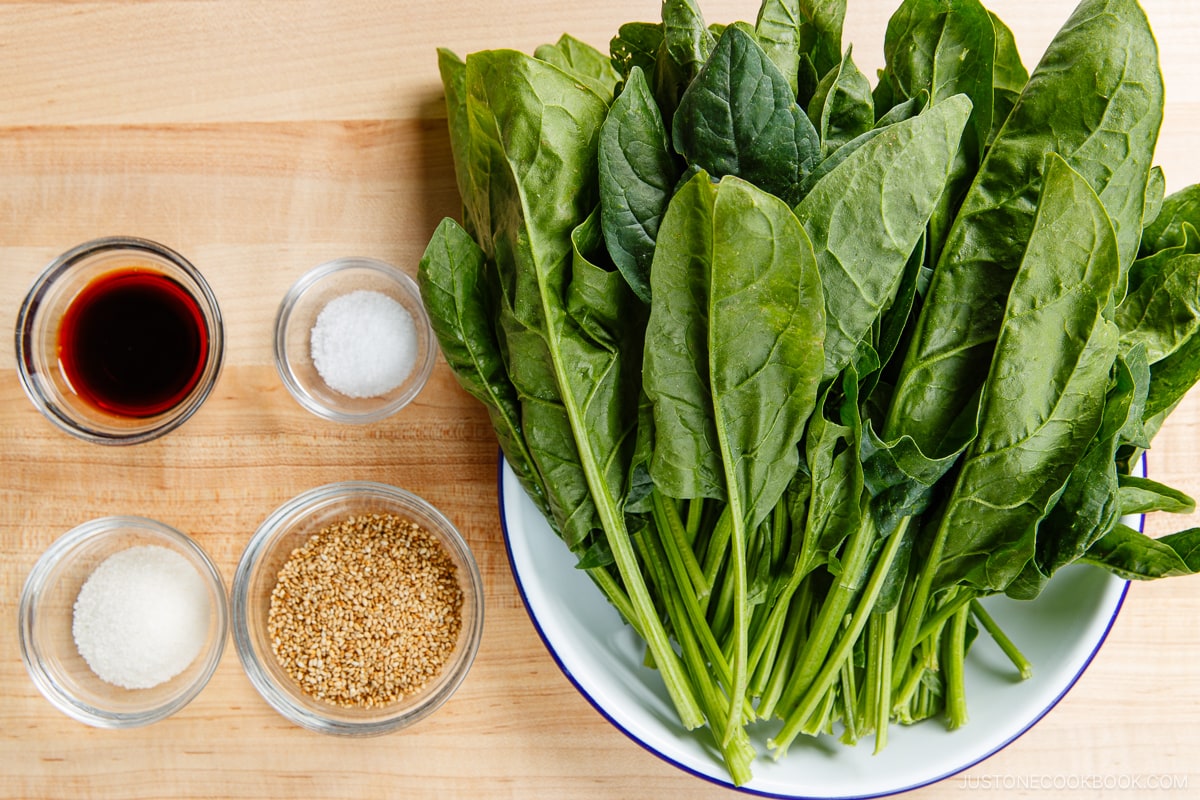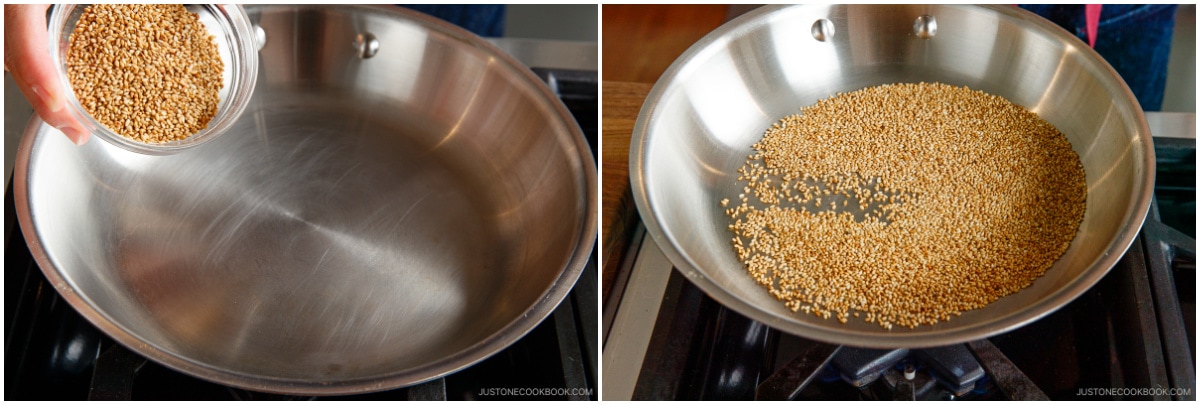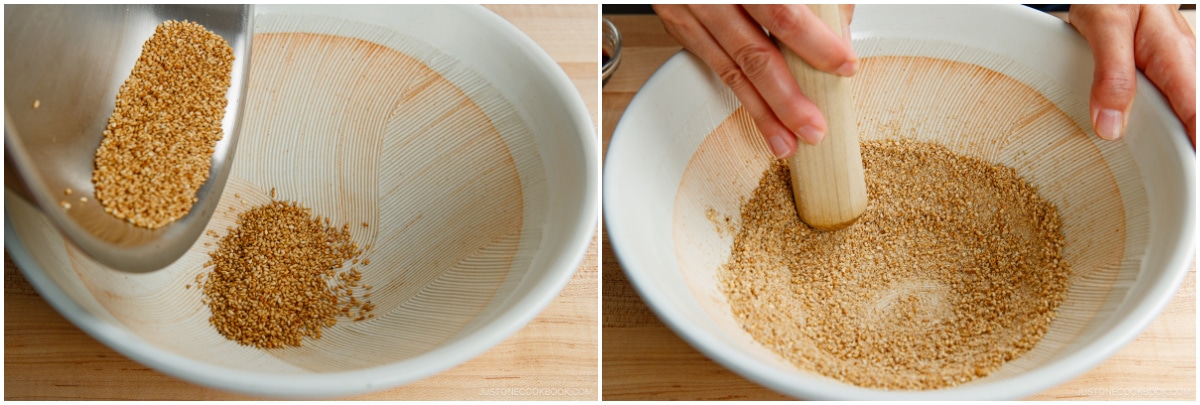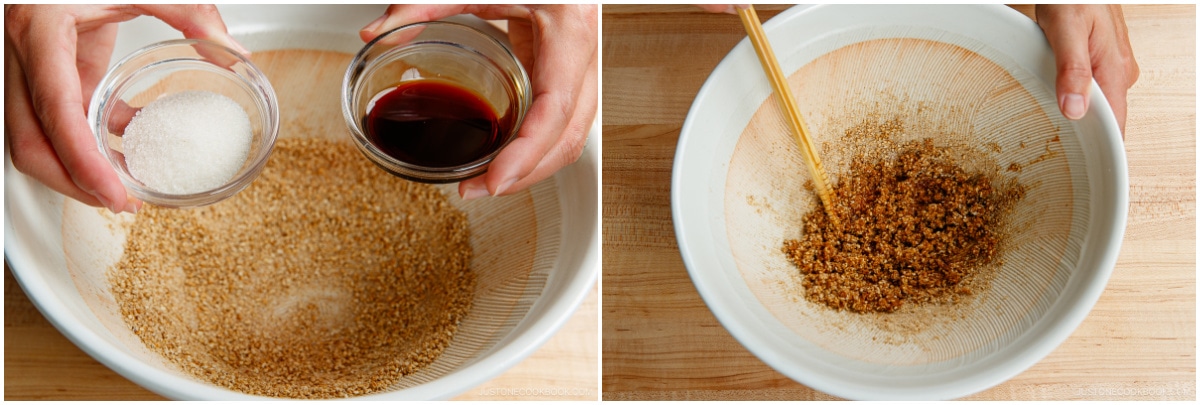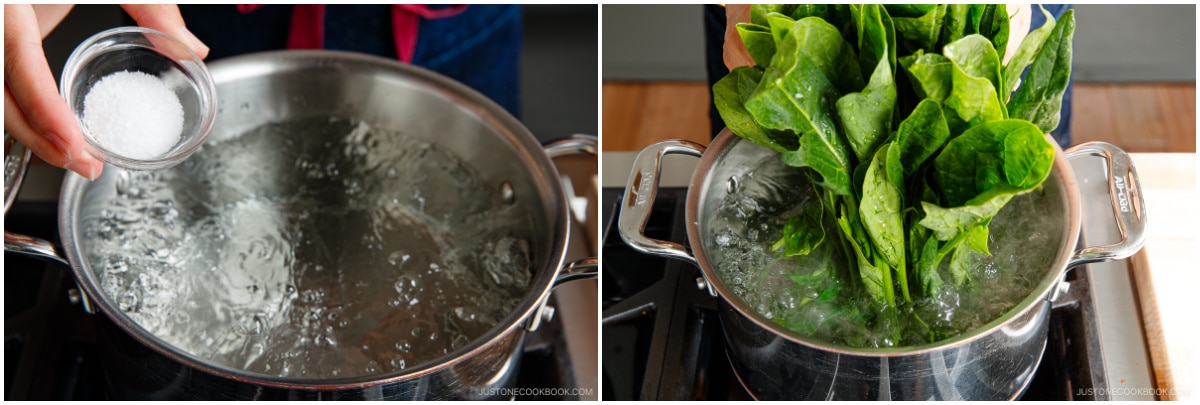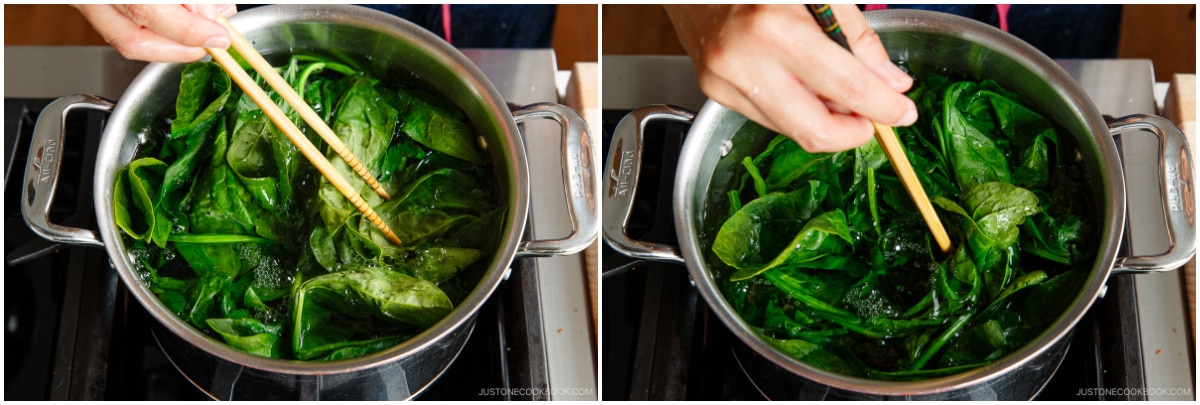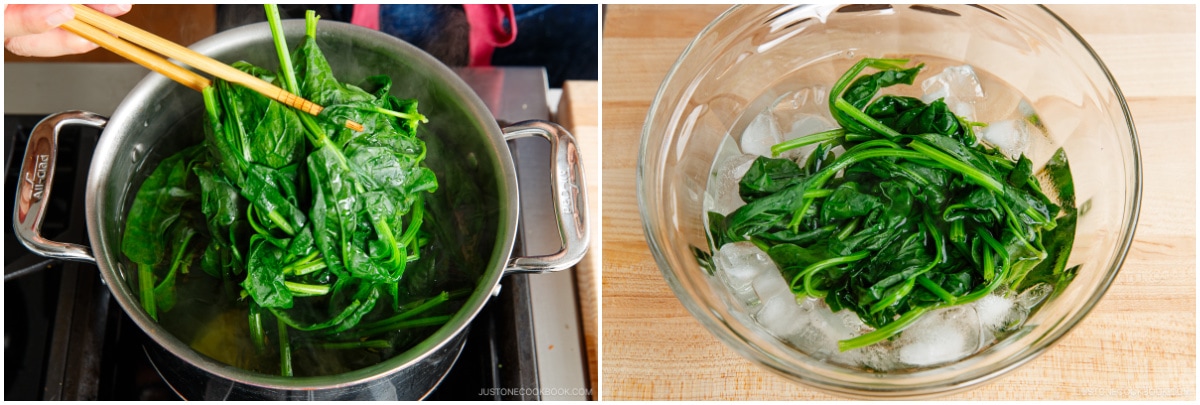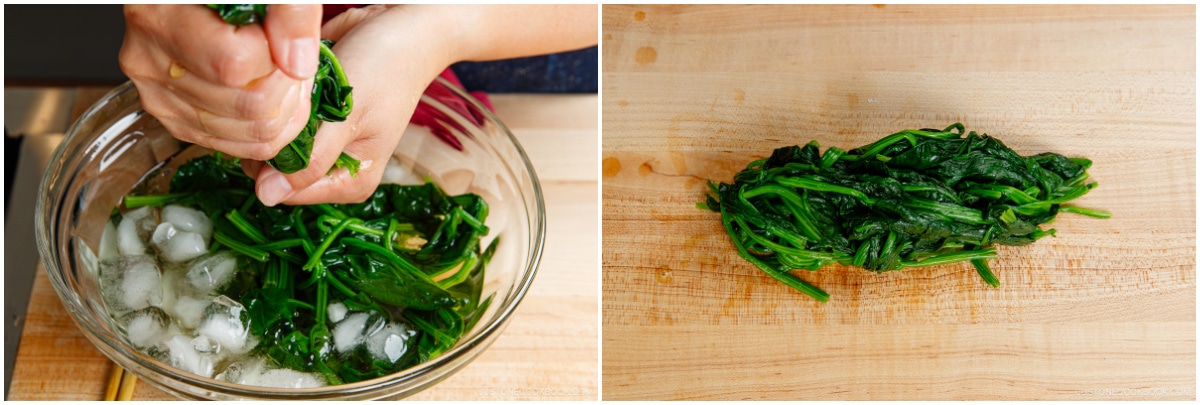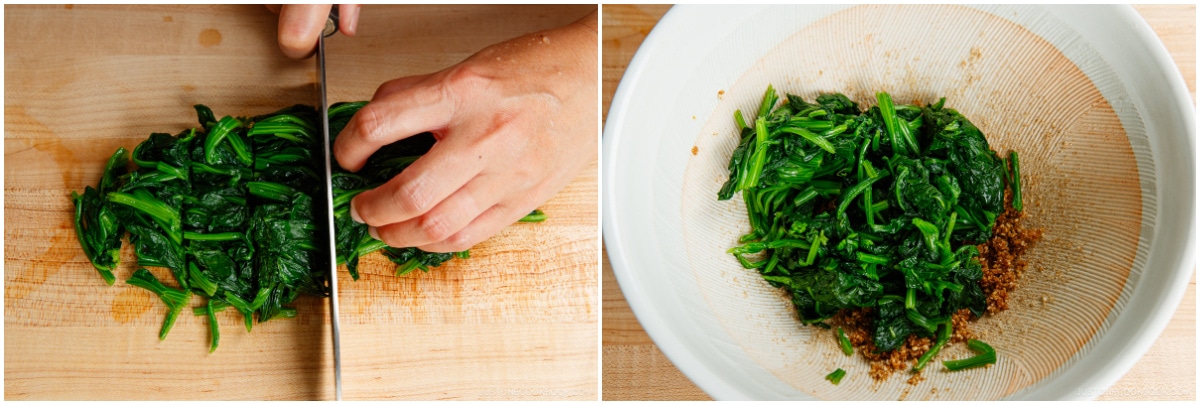One of the mainstays of the Japanese vegetable side dish is the “Goma-ae (胡麻和え).” We would blanch all sorts of vegetables and dress them in a fresh-made sesame sauce. The most popular one is spinach gomaae, or what we call Horenso no Gomaae (ほうれん草の胡麻和え). The technique preserves the nutrients and vibrant color of the greens while enriching them with an aromatic, nutty flavor. Not only does the dish taste good, but it’s also a simple way to put vegetables on your plate!
What is Gomaae?
Goma (胡麻) in Japanese means sesame seed and we call dishes dressed with sesame sauce goma-ae (胡麻和え). The word ae (pronounced as [ah EH]. 和え) comes from the verb aeru ([ah EH ru]. 和える) which is to dress (the food with sauce). There are many kinds of gomaae using different vegetables. In addition to spinach, gomaae can also be made with green beans, broccoli, broccolini, chrysanthemum leaves, and more. It is a lively approach that elevates everyday vegetables into something truly tasty. I absolutely enjoy gomaae as it takes minutes to make and complements well with any style of Japanese food. I think it’s fabulous with other Asian meals too. And if you find your bento lunch needing some colors and boost of nutrition, gomaae will make the perfect addition.
The Ingredients You’ll Need
Spinach (or suggestions below) Toasted white sesame seeds – I recommend grinding your own sesame seeds even though Japanese grocery stores sell convenient ground sesame seeds in a package because the fragrance and flavors won’t be the same. For the dressing: Soy sauce and sugar
That’s it!
How to Make Japanese Spinach Salad
Cooking Tips for Spinach Gomaae
Toast sesame seeds even if they are already pre-toasted. This simple step brings out the toasty and nutty flavors of sesame seeds. Also, leave some seeds whole when you grind them. Whole sesame seeds add a nice, delicate crunch texture to the dressing. Salt the water. It’s important to add salt to the boiling water when you are cooking spinach or any green vegetables. It keeps the veggies in vibrant green color. Blanch from the stem ends. Spinach stems take longer to cook compared to the leafy part. So start by cooking the stems first. Do not overcook the vegetables! Plunge spinach in iced water to stop cooking. The remaining heat will continue to soften the spinach, so a quick iced water bath will stop it from overcooking. Remove the excess moisture from the vegetables so the sesame dressing won’t be diluted. Squeeze the water out as much as you can.
Variations
As I mentioned earlier, you can make this side dish with so many different vegetables of your choice! All you need to do is to cook the vegetables and coat them with the 2-ingredient sesame dressing. Here are some of my suggestions:
Leafy vegetables: Cabbage, broccoli, broccolini, bok choy, collards, Komatsuna, Brussels sprouts, kale, arugula, chard, collards, and chrysanthemum greens. Root vegetables: Carrots, lotus root, gobo (burdock root), potatoes, nagaimo (mountain yam). Legumes: Green beans and snap peas. Fruits: Tomatoes, okra, and bell peppers.
Helpful Tools to Make This Recipe
In Japanese households, we frequently make various types of gomaae so we usually own a Japanese ceramic mortar and wooden pestle to grind sesame seeds.
Japanese ceramic mortar (Suribachi): It’s an earthenware bowl and the inside has a ridged pattern to facilitate grinding. Japanese wooden pestle (Surikogi): Typically made of wood so that it prevents wearing down the ridges in the mortar.
Where to Get Suribachi and Surikogi
I used a small suribachi bowl for many years since I was in college. After having a family, I switched over to a bigger suribachi bowl. The benefit of a large-size suribachi is that you can add the blanched vegetables directly to the bowl to mix with the ground sesame seeds. Then, you can use the bowl as a serving dish. How convenient is that! If you always cook for 2 or more people, I recommend getting at least a medium-sized suribachi bowl. Here are my recommendations: Editor’s Note: The post was originally published on March 30, 2011. It was republished with a new video, new step-by-step and final images, and more content on September 12, 2023.
